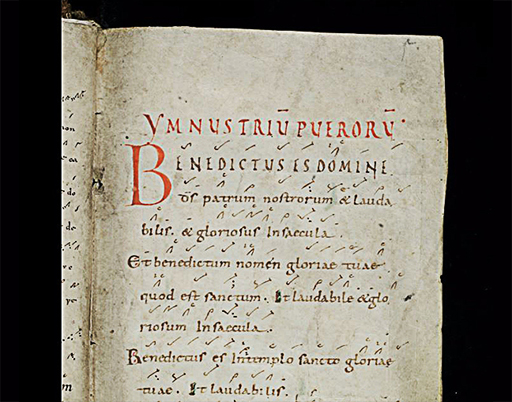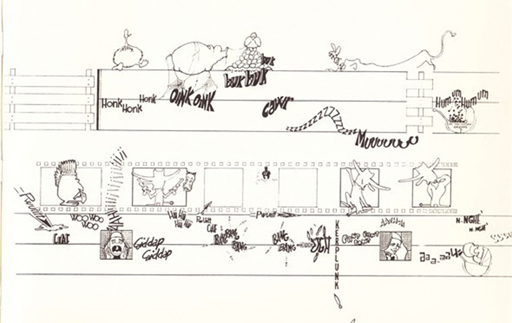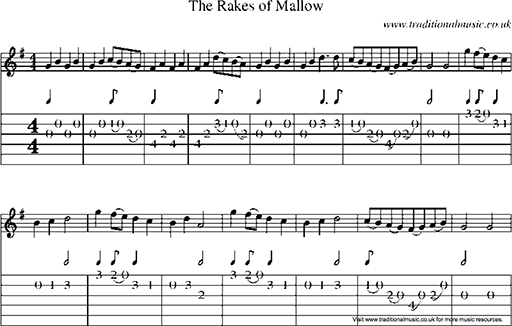1.1 Types of musical score
What does the term ‘musical score’ mean to you? Take a look at these images of scores. Do any aspects of them look familiar to you? Do you have any idea what the music depicted in these examples would sound like?
Music from the middle ages (Figure 1) looks very different from the music of today, as it was only intended as a reminder of a melodic shape that went with words that were fully written out.
Graphic notations, like the one shown in Figure 2, have been used to represent some music of very recent times. The example in Figure 2 looks like a comic strip, but represents a piece of vocal music.
If you play the guitar or deal with popular musical genres you may have come across guitar tab (tablature), chord symbols or lead sheets as shown in Figure 3.
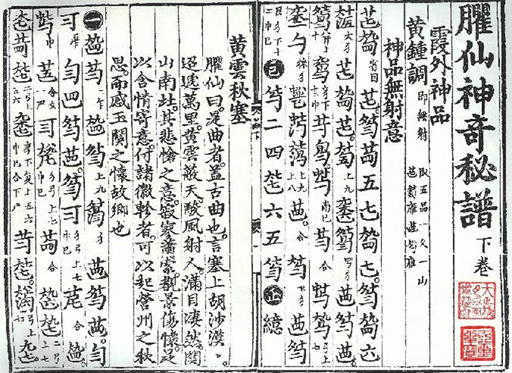
Non-Western cultures such as China and Japan have centuries-old traditions of using tablatures for writing down music that is different from those of Western music. The example in Figure 4 is a score for the qin or Chinese lute.
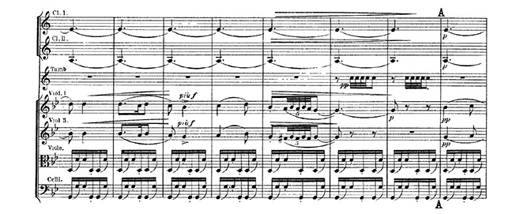
In Western culture we may be used to seeing scores like the final example in Figure 5, but scores are not always like this.

